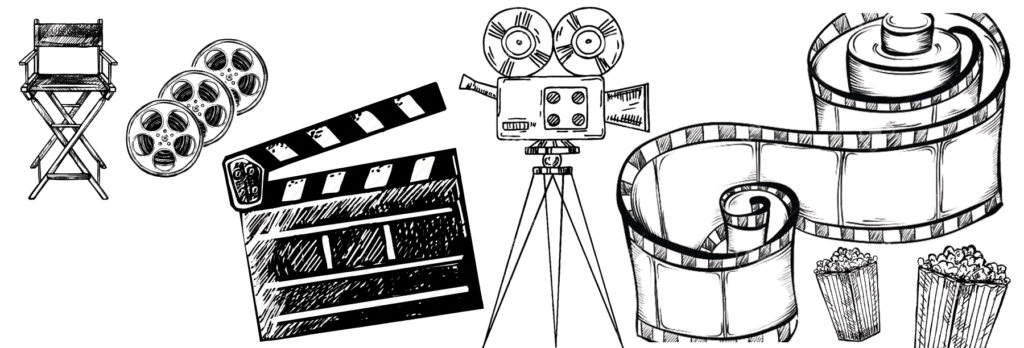22 Years of Hera Pheri: Decoding the Comedy, Understanding the genius of Neeraj Vora's screenwriting….

Often when we watch a remade movie, one that just apes a movie the screenplay of it’s original frame by frame we assume the screenwriter has very little to do. We assume the person just has to translate the same plot to another setting, translate characters to another setting and the job is done. But this process can be very unique, very creative too. The characters can be fleshed out much more, the dialogues can display much more flare, the actors can portray characters with the exact same beats as the original characters yet enact those roles so differently. So much can be done. The movie which made me realize all the above was Hera Pheri.
Ever since it released in 2000 I would have watched this movie uncountable times. And, I am not at all an exception in this case. I think for any 90’s Bollywood cinéphile, it’s always better to ask how many times they’ve watched Hera Pheri rather than if have they watched Hera Pheri at all. Even if one discusses this movie with non movie buffs, if one discusses any of the famous scene from this movie, most likely you’d get very elaborate, very detailed description of all the on goings. The average Hindi movie watching audience of today remembers this movie frame by frame. It’s a cult classic.
Also almost everyone by now knows it is a remake of a Malayalam movie, and most of the people have not bothered to watch the original. I hadn’t watched it for so many years. Not until very recently I decided to give the 1989 original Ramjirao Speaking a watch just to check out how similar both these movies are. As people have told me both these movies are very similar. Almost 80-85% most of Hera Pheri is borrowed straight from Siddiqui- Lal’s 1989 crime caper. But yet, Hera Pheri comes across so unique, the characters have a strong vibe, and feel, that’s their own. I gave Hera Pheri a revisit post Ramjirao Speaking and it was here that I discovered before how this movie is a masterclass in screenplay adaptation.
Neeraj Vora as the screenplay and dialogue writer deserves a lot of credit here. Hera Pheri is the kind of movie where majority of the comedy is in it’s dialogues. And Neeraj Vora excels in this department. He has written some of the most peppy, funny dialogue exchanges especially between the lead trio. Through his writing he has fleshed out Raju, Shyam and Baburao Ganpatrao Apte so well. He has also fleshed out secondary characters like Khadak Singh, Anuradha and Devi Prasad, even the tertiary ones like Kabeera. I am not taking anything away from the extremely talented actors who played these characters nor am I taking anything away from Priyadarshan whose directed the movie so well. But yeah Neeraj Vora has really pulled off something great.

Talking about our lead trio, I would start with the most iconic Baburao Ganpatrao Apte alias Babu Bhaiya. He is one wasted lazy ranting guy. He drops his delusional humour filled quirky rants left, right and centre. But he’s still a very kind hearted soul who’d extend a lot of kindness and understanding. Also no one can counter the fact that no other actor would have played Babu Bhaiya as well as Paresh Rawal did. It was an image changing, game changing role for him. After playing many villainous roles he was perceived more as a go to negative role guy by late 90s. Back then absolutely no one imagined he’d shine so brightly in a comedy role. Babu Bhaiya continues to be part of popular culture even today. He’s probably one of the most memorable contributions by this movie. The scene with him trying to dispose off a Kalashnikov rifle while he is blinded without his specs is a laughter riot. It’s amazing how unique Babu Bhaiya is while fulfilling the exact same beats that Innocent’s Mannar Mathai played in Ramji Rao Speaking.

Next I would like to speak about Raju. The character and this movie was a game changer for Akshay Kumar too. This movie introduced the funny, comical side of Akshay Kumar. Back in late 90’s things were really not looking good for him. His action movies were not doing so well. Akshay Kumar had nonetheless managed to hold some ground in family drama genre movies. This movie showed everyone how well Akshay Kumar can do comedy. His Raju is the smart one among the three. The ambitious guy who’d try something crooked more readily compared to Babu Bhaiya or Shyam. But Raju has a moral ground. He is trying to make money to get his mom out of her old age home. He is pretending to be a rich guy in front of his mom knowing how much trouble she took to bring him up. He doesn’t want her to feel heartbroken knowing about his plight. He himself is unemployed, he takes up petty jobs to be able to afford a living. Of the three Raju is the most fleshed out compared to his original counterpart. He is much better written compared to his original Gopalakrishnan. He has a better arc. His introduction actually shows him as a super wealthy playboy grooving to the track “Jab bhi koi bhi Haseena” which turns out to be a heavily contrasting dream sequence that cuts straight to his actual impoverished plight. Raju too is a part of popular culture even today. He is the face of many popular memes. I still crack up heavily whenever the “Uthaa Le” scene plays out between Raju and Babu Bhaiya. Here is one character who shows how good writing, good direction along with perfect casting can do wonders.
Finally coming to Shyam. Shyam is off course the good one, the most naïve and innocent among the three. He comes to Mumbai only to acquire the Bank job his father once held. But as misfortune falls upon him, there is another contender Anuradha (Tabu) the relative of another deceased ex employee in the same bank who died the same day. Anuradha is trying to get the same job for herself. The manager of the bank (played by Asrani) wants to give the job to Anuradha over Shyam. As these troubles aren’t enough for Shyam his childhood buddy Khadak Singh (played by Om Puri) lands up in Mumbai desperate to get back the money he once landed to Shyam. Casting Suneil Shetty in the role was a good move. He easily manages to look like the more innocent and straight person among the three. Shyam doesn’t get as much focus as his original Balakrishnan got but still holds himself well.

I loved Om Puri as Khadak Singh too. He managed to have all the goofiness that was needed of him. The scenes where he lands up at the trio’s appartment to demand money from Shyam are hilarious. The way he calls Shyam “Ghanshyam!!” is also very iconic.
It’s interesting how all the songs in this movie are shot in expensive foreign locations in sharp contrast to the story which is grounded in the city’s lower middle class. Also all the songs have gibberish choruses whether it is “Kitikitikitna kitikitikitna” from Dene waala track or “Sanasan Sanaanaanu” from Jabh bhi koi bhi Haseena” track or “Tunatun Tunaktuntun” from the track of the same name of the same name or “Humba Leela Humba Leelo” from track of the same name. All of these are actually quite cute. They add to a playful nonsensical value of the movie.
The incidenting point comes in the second half of the movie when the trio get a call in their apartment due to a wrong entry in the city telephone directory. They get a ransom call from a cola sipping kidnapper Kabeera who introduces himself with his iconic line “Kabeera Speaking!” He has kidnapped the grand daughter of a rich businessman Devi Prasad and demands a ransom to let her go. Shyam receives the call. Raju looks at this cross connection as an opportunity and hatches a plan enabling the three to make a lot of bucks for themselves, and the Hera Pheri (monkey business) begins.


Devi Prasad and Kabeera are both clearly the more serious characters outside the goofy-funny spectrum of all the main characters. They remain so throughout. Hera Pheri has that element of consistency in it.
Kudos to Priyadarshan for handling the adaptation just the way it is. He doesn’t try to fix what’s not broken, and all his changes only enhance the source material. Rarely do you get such handling in adaptations.
Off course coming back to Neeraj Vora, the guy has brought a strong element of relevance. Ultimately Hera Pheri is a take on the economic struggles of the lower middle class, it’s an insight into struggle for survival in the heavily urbanized cities as much as it is a quirky comedy. It’s these layers that make the movie as much timeless as does the humour. I Hope it continues to age just as well.


